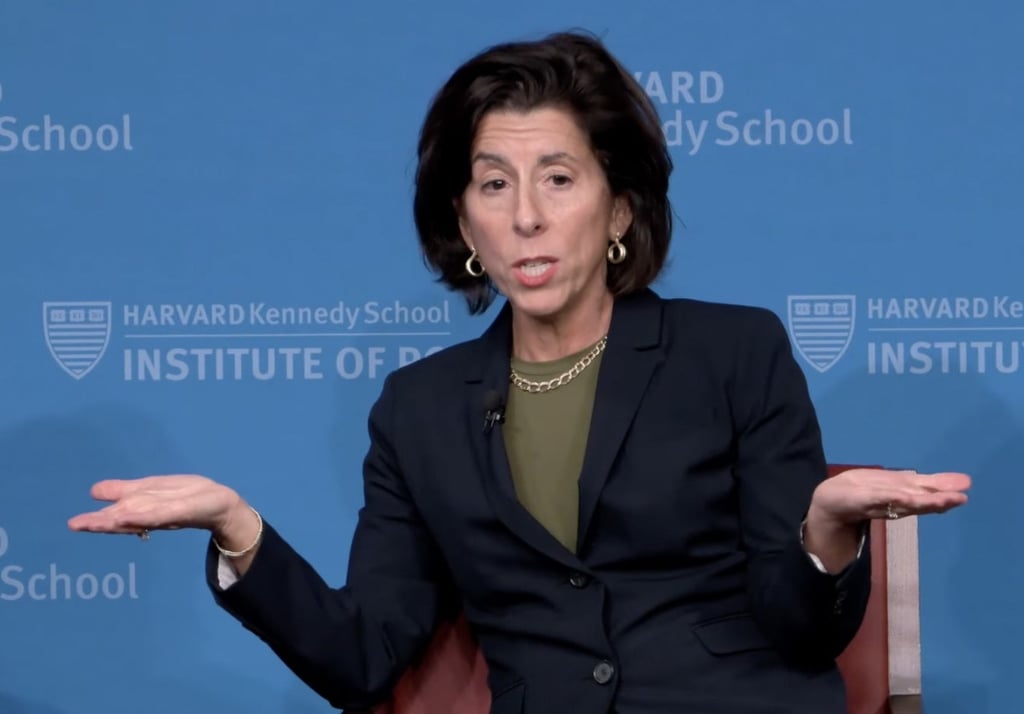Report on a Proposed Framework for AI Regulation Aligned with Sustainable Development Goals
Introduction: The Need for a Coherent AI Governance Strategy
The proliferation of artificial intelligence (AI) systems has prompted varied regulatory responses from individual states, creating a fragmented legal landscape. This approach poses significant risks to consumer welfare, technological innovation, and sustainable economic growth. This report analyzes the challenges of disparate state-level AI regulations and proposes a unified, voluntary AI rating system. Such a framework is essential for aligning the development of AI with key Sustainable Development Goals (SDGs), particularly those concerning innovation, economic equality, public health, and institutional strength.
The Impact of Regulatory Fragmentation on Sustainable Development
Hindering Innovation and Sustainable Economic Growth (SDG 8 & 9)
The current trend of states enacting idiosyncratic AI laws creates a complex and often contradictory compliance environment. This “patchwork” of regulations directly undermines the objectives of SDG 8 (Decent Work and Economic Growth) and SDG 9 (Industry, Innovation, and Infrastructure).
- Increased Compliance Costs: Startups and smaller firms face disproportionately high fixed costs to navigate conflicting legal mandates across states, stifling their ability to compete and innovate.
- Deterrence of Market Entry: The financial strain of compliance acts as a significant barrier to entry, discouraging the experimentation necessary for a vibrant and competitive AI ecosystem.
- Creation of Regulatory Moats: This environment favors large, incumbent firms with extensive legal resources, concentrating market power and hindering the broad-based industrial and economic growth envisioned by the SDGs.
Exacerbating Inequalities (SDG 10)
A fragmented regulatory system threatens to widen the gap between large corporations and smaller innovators, contrary to the aims of SDG 10 (Reduced Inequalities). By creating a market that rewards the ability to navigate legal complexity rather than technological merit, the current approach punishes new entrants and reinforces the dominance of established players, limiting economic opportunity and concentrating the benefits of AI within a few entities.
A Proposed Framework: A Voluntary AI Rating System for Sustainable Progress
Enhancing Public Health and Well-being (SDG 3)
In response to public concern over AI’s impact on mental health, a standardized rating system offers a mechanism for transparency and consumer protection, directly supporting SDG 3 (Good Health and Well-being). Modeled on the Motion Picture Association’s (MPA) film ratings, this system would classify AI tools based on their intended use and risk profiles.
- Informed Consumer Choice: Clear ratings (e.g., “child-safe,” “mental-health appropriate,” “expert-verified”) would empower users to select AI products appropriate for their needs, mitigating risks associated with unvetted applications.
- Market-Based Safety Incentives: Developers would be incentivized to seek certification for reliability and safety, fostering a market where trust is a competitive advantage and contributing to the overall well-being of society.
Fostering a Market Built on Trust and Transparency
A voluntary rating system addresses the information asymmetry between AI developers and consumers, a classic market failure. By providing a shared language for transparency, it allows competition to flourish based on quality and trust rather than opacity. This aligns with sustainable economic principles by ensuring market mechanisms reward responsible innovation.
Governance and Implementation Through Multi-Stakeholder Partnerships (SDG 16 & 17)
Building Effective and Accountable Institutions (SDG 16)
The credibility of a voluntary rating system depends on a robust governance structure, reflecting the principles of SDG 16 (Peace, Justice, and Strong Institutions). The system must be more than self-regulation; it requires oversight and accountability.
- Transparent Governance: The criteria for ratings must be public, evidence-based, and subject to periodic review by independent experts, consumer advocates, and academics.
- Credible Enforcement: Existing consumer protection laws provide a backstop. State attorneys general must be empowered with the technical capacity to pursue firms that misrepresent their AI’s ratings or capabilities.
- Adaptive Standards: The system must be flexible enough to evolve with rapid technological advancements, preventing the calcification of premature or outdated standards.
- Inclusive, Multi-Stakeholder Body: To prevent industry capture, the rating entity should be governed by a council with balanced representation from AI developers, state regulators, civil society, and academia, ensuring decisions reflect broad public interest.
Leveraging Partnerships for the Goals (SDG 17)
The successful implementation of an AI rating system is a prime example of SDG 17 (Partnerships for the Goals), requiring collaboration between the public and private sectors.
- Industry Leadership: The AI industry should lead the development of the rating framework, demonstrating a commitment to responsible innovation.
- Federal Coordination: Federal agencies like the National Institute of Standards and Technology (NIST) and the Federal Trade Commission (FTC) can help establish baseline disclosure categories and promote the framework, lending it credibility without imposing rigid mandates.
- State-Level Enforcement: State attorneys general would enforce truth-in-labeling, ensuring the system’s integrity and protecting consumers.
Conclusion: A Unified Path to Responsible AI Innovation
The United States requires a coherent national framework for AI governance that fosters trust, empowers consumers, and enables competition. A voluntary, multi-stakeholder AI rating system offers a practical and effective alternative to the current fragmented and innovation-stifling regulatory approach. By aligning with the principles of the Sustainable Development Goals, this framework can balance consumer protection with economic progress, ensuring that advancements in AI contribute to a more equitable, innovative, and sustainable future for all.
Analysis of Sustainable Development Goals in the Article
1. Which SDGs are addressed or connected to the issues highlighted in the article?
- SDG 3: Good Health and Well-being: The article directly addresses this goal by highlighting the severe negative impacts of AI chatbots on mental health, specifically mentioning “two tragic cases in which teenagers died by suicide following prolonged use of artificial intelligence companions.” This connects the use of AI technology to public health and well-being outcomes.
- SDG 9: Industry, Innovation, and Infrastructure: This goal is central to the article’s discussion. It explores the tension between AI innovation and regulation. The text warns that a “fragmented regulatory system… will discourage AI innovation and growth” and that a “patchwork of well-intentioned but incompatible regulations… risks stifling the very competition and experimentation among AI labs.” It also points out the disproportionate economic burden on smaller firms, stating that compliance costs become “a major financial strain for the average startup,” which hinders inclusive industrialization and innovation.
- SDG 16: Peace, Justice, and Strong Institutions: The article’s core proposal revolves around creating effective and transparent governance for AI. It critiques the current “reflexive rather than reflective” policy responses and advocates for a system that promotes “transparency and accountability.” The call for a “coherent national framework” and the role of “State attorneys general” in enforcing consumer protection laws directly relate to building effective, accountable, and inclusive institutions at all levels.
- SDG 17: Partnerships for the Goals: The proposed solution—a voluntary, industry-led rating system—is a clear example of a multi-stakeholder partnership. The article suggests the federal government play a “coordinating role” and that the rating body be a “multi-stakeholder council composed of representatives from across the ecosystem: AI developers large and small, state regulators, consumer advocates, academics, and civil society organizations.” This embodies the collaborative approach promoted by SDG 17.
2. What specific targets under those SDGs can be identified based on the article’s content?
-
Target 3.4: By 2030, reduce by one third premature mortality from non-communicable diseases through prevention and treatment and promote mental health and well-being.
- The article’s opening statement about teenagers dying by suicide after using AI companions directly links the technology to mental health crises and premature mortality, making this target highly relevant. The discussion about creating “child-safe” and “mental-health appropriate” categories in a rating system is a direct response to this issue.
-
Target 9.3: Increase the access of small-scale industrial and other enterprises, in particular in developing countries, to financial services, including affordable credit, and their integration into value chains and markets.
- The article emphasizes how fragmented regulations “impose significant fixed costs on startups and smaller firms,” creating a “regulatory moat” that punishes new entrants. This directly addresses the challenge of integrating small-scale enterprises into the market by highlighting a significant barrier to their survival and growth.
-
Target 9.5: Enhance scientific research, upgrade the technological capabilities of industrial sectors in all countries, in particular developing countries, including, by 2030, encouraging innovation and substantially increasing the number of research and development workers per 1 million people and public and private research and development spending.
- The article argues for a policy architecture that balances consumer protection with innovation to avoid stifling “competition and experimentation among AI labs that could make AI safer and more beneficial.” The goal is to create a system that encourages, rather than discourages, technological advancement and innovation in the AI sector.
-
Target 16.6: Develop effective, accountable and transparent institutions at all levels.
- The central proposal for a “voluntary, standardized AI rating system” is designed to “improve transparency and protection for consumers.” The article argues this system would create a “shared language for transparency” and make the AI market more accountable by allowing consumers to make informed choices and regulators to enforce standards against misrepresentation.
-
Target 17.17: Encourage and promote effective public, public-private and civil society partnerships, building on the experience and resourcing strategies of partnerships.
- The article explicitly recommends a partnership model for governance. It suggests an “industry-led” system where the “federal government can play an essential coordinating role” and the governing body includes “AI developers… state regulators, consumer advocates, academics, and civil society organizations,” perfectly aligning with the principles of this target.
3. Are there any indicators mentioned or implied in the article that can be used to measure progress towards the identified targets?
- For Target 3.4: The article implies the need for indicators that track the adverse effects of AI on mental health. An implied indicator would be the incidence of mental health crises, self-harm, or suicide linked to the use of AI applications, particularly among minors.
-
For Target 9.3 & 9.5: The article suggests that the health of the AI innovation ecosystem is a key measure of success. Implied indicators include:
- The number of new AI startups successfully entering and operating in the market.
- The level of regulatory compliance costs as a percentage of operating budgets for small AI firms.
-
For Target 16.6: Progress towards more transparent and accountable institutions in AI can be measured by the adoption of the proposed solution. Implied indicators are:
- The establishment and adoption rate of a voluntary, multi-stakeholder AI rating system by developers.
- The number of enforcement actions taken by state attorneys general or the FTC against deceptive AI marketing or false ratings.
- Surveys measuring consumer trust and understanding of AI products.
- For Target 17.17: The effectiveness of the partnership model can be measured directly. An implied indicator would be the establishment of a multi-stakeholder governance body for AI ratings, with active participation from industry, government, and civil society sectors.
4. Table of SDGs, Targets, and Indicators
| SDGs | Targets | Indicators (Implied from the Article) |
|---|---|---|
| SDG 3: Good Health and Well-being | 3.4: Promote mental health and well-being. | Incidence of mental health issues (e.g., suicide) linked to the use of AI companion applications. |
| SDG 9: Industry, Innovation, and Infrastructure | 9.3: Increase the access of small-scale enterprises to financial services and their integration into markets. | The number of new AI startups entering the market; Regulatory compliance cost burden on small firms. |
| 9.5: Encourage innovation and upgrade technological capabilities. | Level of competition and experimentation among AI labs without being stifled by fragmented regulation. | |
| SDG 16: Peace, Justice, and Strong Institutions | 16.6: Develop effective, accountable and transparent institutions at all levels. | Development and industry adoption rate of a transparent AI rating system; Level of consumer trust in AI products. |
| SDG 17: Partnerships for the Goals | 17.17: Encourage and promote effective public, public-private and civil society partnerships. | Establishment of a multi-stakeholder council (including industry, government, and civil society) for AI governance. |
Source: promarket.org







